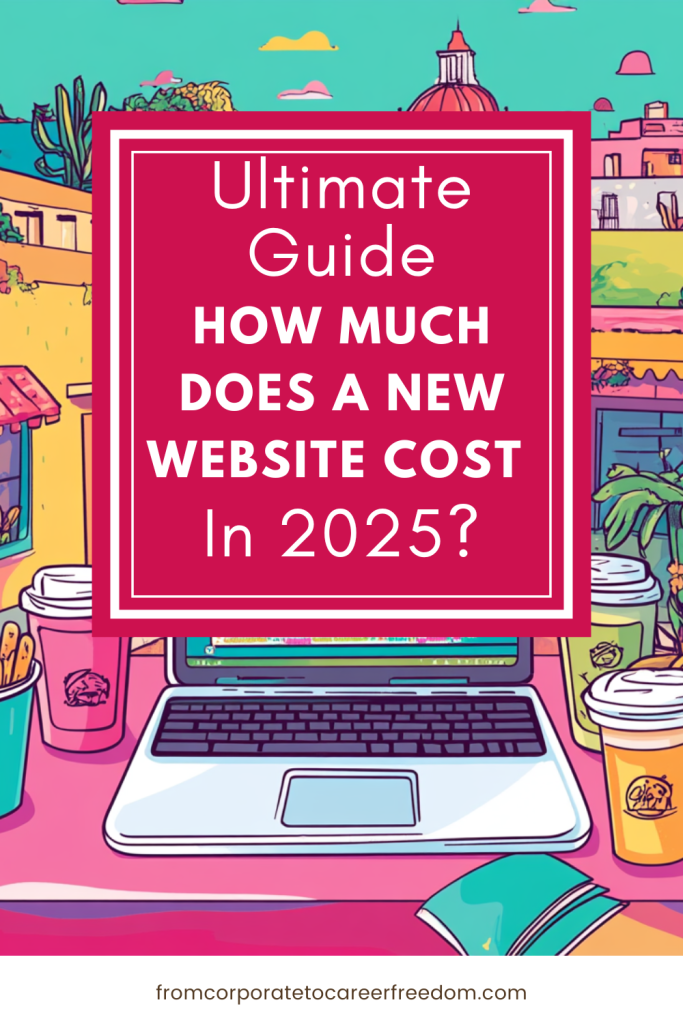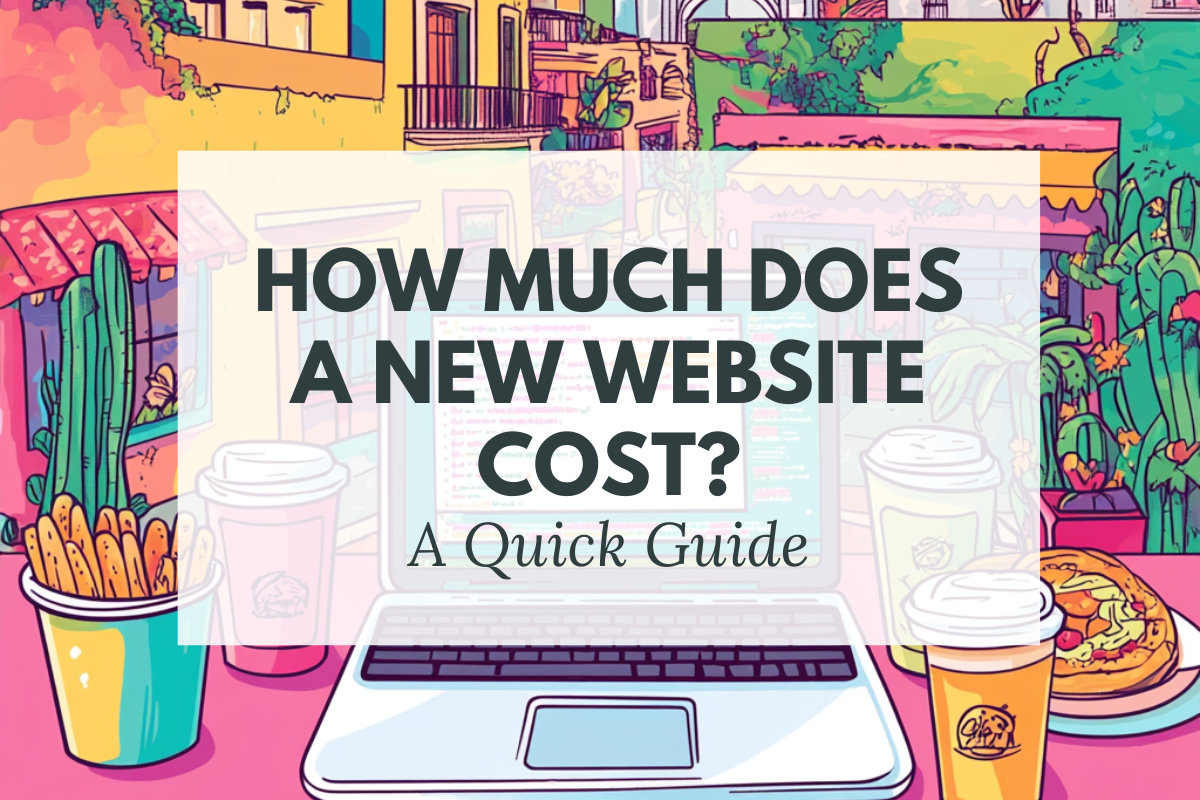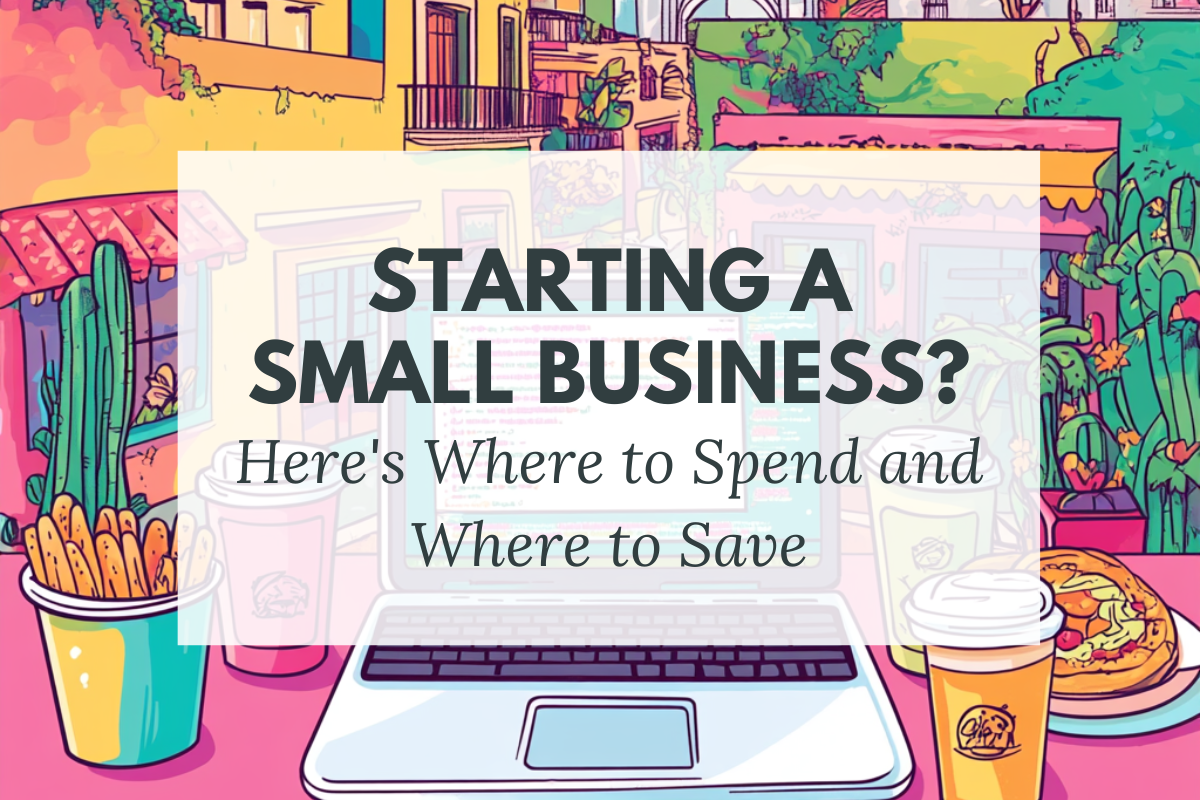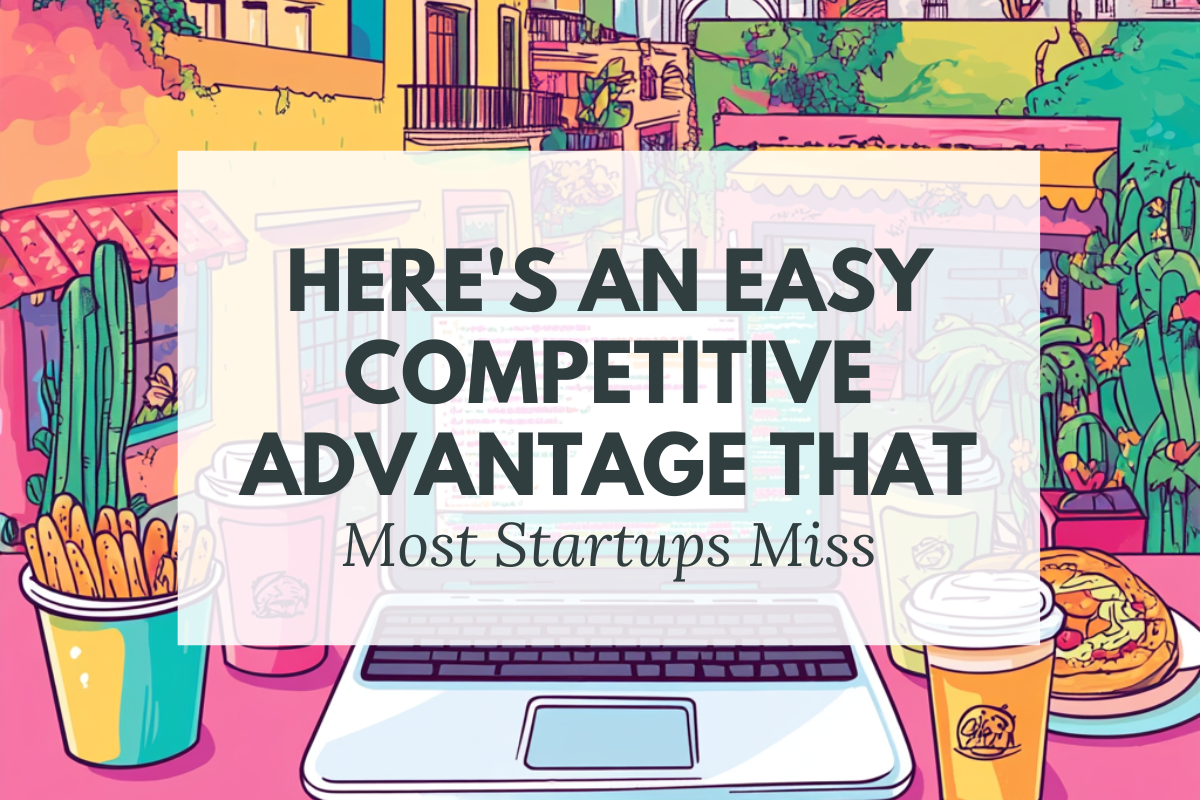It’s often one of the first — and most important — questions a startup or small business owner will ask when shaping their online presence: how much will your new website cost? The answer? It varies.
Building a website can cost anywhere from a few hundred pounds to well over six figures. The final number depends on your goals, scope, and approach. In this guide, we’ll break down common website-building options, highlight hidden costs to keep in mind and help you choose the path that best supports your business.
Read on to budget smart — and avoid unwelcome surprises.
This article contains affiliate links, and I may receive a commission for any successful referrals from these links.
Key Takeaways From This Article
Don’t have time to read the complete guide? Here are the key points you need to know when budgeting for a new website:
Website costs range widely — from under £500 for a simple DIY site to over £ 200,000 for complex builds.
Align budget with business goals — know what your site must achieve before spending.
Three build routes:
- DIY (WordPress, Wix, Shopify) — for basic, low-budget sites.
- Freelancers — for small to mid-size sites needing some customization.
- Agencies — for complex, high-growth business sites.
Watch out for hidden costs: domain, hosting, themes, plugins, content, SEO, maintenance, security, marketing.
Ongoing spending is key — plan 10–20% of your annual marketing budget for website upkeep.
Start small, scale smart — many businesses grow from DIY or freelance-built to agency-built as they expand.
Project clarity saves money — define what you need clearly to avoid overruns.
Biggest takeaway: plan realistically — view your website as an evolving asset, not a one-time job.
- Good hosting and security are worth paying for — they directly impact performance, SEO, and customer trust.
- Content quality is a major success factor — investing in professional copywriting, photography, and SEO makes your site more effective.
- Plan for flexibility — leave room in your budget for unexpected needs or future growth opportunities.
If you take one thing away: plan your budget realistically — and treat your website as an evolving asset, not a one-time project.
Section 1: Understanding Website Costs
Before comparing quotes or deciding between building your site yourself and hiring a professional, it’s helpful to understand why website costs can vary so widely. Some startups launch a beautifully designed site for under £500. Others invest tens of thousands in a complex platform. The difference isn’t just in what you spend — it’s in what you need your website to achieve. In this section, we outline the key factors that affect pricing, enabling you to budget with greater confidence and avoid common pitfalls.
Why Website Costs Vary So Much
There is no single answer to the question, ‘How much does a website cost?‘ That’s because no two websites are exactly alike. Each project involves different business goals, audiences, features, and technical needs — and this complexity drives the final cost.
On the simpler end of the spectrum, you might need a sleek “brochure” site that showcases your company’s information and contact details. On the more advanced end, you may require an eCommerce store, an interactive booking system, or a custom-built web app — each of which demands more time, expertise, and thorough testing.
Labor is also a significant factor. Whether you hire an agency, a freelancer, or build the site yourself, you are essentially paying for someone’s time and skill. A highly experienced team developing a sophisticated website will naturally cost more than a DIY option — but for certain businesses, that investment pays off.
Finally, market rates can differ depending on whom you hire (agency, freelancer, offshore team) and where they’re located. This is why it’s essential to start with a clear understanding of your needs and budget before proceeding.
Factors That Affect the Total Cost of a Website
When planning your website budget, the scope of your project plays a significant role — it’s not just about picking an agency or using a DIY tool. Here are the key factors to consider:
Project complexity
A simple site with a few pages is quite different from a full-scale eCommerce platform or a custom web application. More complexity means more time, expertise, and cost.
Number of pages
More pages require more design, content creation, and testing — all of which increase both time and cost.
Design
Template-based designs are more affordable in terms of web design costs. Custom designs — built from scratch by a professional web designer to reflect your brand — cost more but offer a distinctive look and feel.
Functionality
Basic brochure sites are less expensive. Advanced features, such as an e-commerce online store, booking systems, membership areas, or interactive tools, add significant development time and cost.
Content requirements
Copywriting, photography, and video production usually carry separate fees. High-quality content elevates your site, but it adds to the budget.
SEO optimization
A basic SEO setup is often included. More advanced SEO — including keyword research, technical optimization for search engines, and content tuning — typically incurs additional charges.
Integrations
Linking your site with CRMs, payment systems, or marketing platforms increases development time and may involve licensing fees.
User experience and accessibility
Creating an inclusive and accessible site — one that meets legal and ethical standards — requires additional design, testing, and refinement.
Testing and QA
Comprehensive testing across browsers, devices, and screen sizes is critical, but it is also time-intensive.
Maintenance and support
After launch, ongoing updates, backups, and support incur additional costs — a frequently overlooked aspect of budgeting.
The Typical Website Development Process (And Where Costs Occur)
Understanding how your website budget is spent starts with knowing what it takes to build a professional site. Each phase demands time, skill, and coordination — and each one contributes to the total cost.
Discovery and requirements gathering
Before any design or coding happens, your team will collaborate with you to define your goals, target audience, must-have features, and technical needs. For larger projects, this may include detailed workshops or strategy sessions.
Wireframing and design
The site’s visual structure is first mapped out using wireframes. Once approved, designers create the site’s look and feel, encompassing typography, color schemes, imagery, and branding. Custom design work is one of the most significant cost factors.
Development
Developers then bring these designs to life, coding the necessary functionality. This could involve anything from setting up simple templates to building complex, tailored features.
Content population
Every site needs content — text, images, videos — which must be written, formatted, and uploaded. If you’re not supplying this content yourself, preparing it will add to your costs.
Testing and quality assurance (QA)
Thorough testing ensures your site works seamlessly across different browsers, devices, and screen sizes. Accessibility checks and performance optimization also occur at this stage.
Launch and deployment
Finally, the site is moved to your live domain, followed by a series of final checks. Larger sites may require phased rollouts or planned downtime.
Ongoing maintenance and support
Once live, your site will need regular updates, security patches, and backups — either through a support package or billed as required.
Section 2: Core Options for Building a Website
Once you understand what shapes a website costs, your next big decision is how to build your site. The good news? There’s an option for every budget and skill level — from DIY platforms to world-class design agencies. The key is to choose an approach that aligns with your business needs, technical capabilities, and growth plans.
In this section, we’ll look at three main routes you can take and what they typically cost to help you figure out the best option for your business.
Option One: Hiring a Web Agency — Typical 2025 Prices
Simple Brochure Website
(small business website, up to ~10 pages, basic lead generation features)
£5,000–£15,000
- Some smaller boutique agencies offer this closer to £5K–£8K
- Larger agencies typically charge £10K–£15K+
Mid-size Website
(eCommerce, membership, booking system, or more advanced features)
£15,000–£50,000
- The average cost of a £ 20,000–£ 50,000 range is very common for a solid e-commerce site today.
Large, Complex Website or Web App
(custom platforms, integrations, unique functionality, large content volumes, global eCommerce, high scalability requirements)
£50,000–£200,000+
- High-end digital agencies often quote six figures for this level of project.
Market Trends and Updates
- The starting point for agency builds has dropped slightly. Smaller studios or leaner teams now offer simple sites in the £ 5,000–£ 8,000 range.
- The upper end has climbed — complex builds today can easily exceed £ 150,000, particularly for high-profile e-commerce platforms, enterprise solutions, or those requiring exceptional design and UX.
Summary
Your original ballpark of “$10K for basic site, $50K–100K+ for complex” remains broadly accurate. In pounds today, I’d update it roughly as:
- Simple site: £5K–£15K
- Mid-level site: £15K–£50K
- Complex/high-end: £50K–£200K+
Hourly Rates
Agency hourly rates have also edged up:
UK and US agencies typically charge £80–£200+ per hour, depending on their size and reputation.
Option Two: Hiring a Freelancer
Hiring a freelancer can be a smart middle-ground — giving you professional skills without the full cost of an agency. Freelancers often work alone or in small teams and are a good choice for building simple or moderately complex websites for startups, small businesses, and solo entrepreneurs.
Typical rates in 2025:
- Freelancer hourly rate: £30–£75 per hour (UK/US-based), though highly experienced or specialist freelancers may charge £100+
- Basic brochure website: £500–£2,000
- Small eCommerce or membership site: £1,500–£5,000
- More complex, customized builds: £5,000–£15,000+
You’ll usually find freelancers through platforms like Upwork, Fiverr Pro, and LinkedIn or by asking for personal recommendations. Many offer package pricing instead of hourly billing, making it easier to plan your budget.
Pros: Flexibility, lower cost than an agency, and direct communication with your developer or designer.
Cons: You’ll be responsible for managing the project, quality, and timelines, which may vary depending on the freelancer’s availability.
For startups and small businesses with clear, simple needs, a good freelancer can deliver a polished, professional site — often faster and more affordably than an agency.
Option Three: Building Your Website Yourself
DIY website builders have advanced significantly since 2013. Today, you can create a professional-looking site yourself — no coding needed — using a content management system platform built for non-technical users.
Popular choices in 2025 include WordPress, Squarespace, Shopify (for eCommerce), Wix, Webflow, and newer tools like Framer. These platforms provide templates, drag-and-drop editors, and a wide range of plugins to expand functionality.
Costs:
- WordPress: Free core software; ~£50–£150/year for premium themes; ~£5–£25/month for hosting
- Squarespace / Wix / Shopify: ~£15–£50/month, including hosting
- Domain name: Typically £10–£20/year
- Optional extras: Paid plugins, premium templates, stock photos, and copywriting services
Time Investment:
If you’re new to website building, plan to spend a few days learning the platform and building your site. Simple brochure-style sites are easily achievable. However, if you want advanced features, you may still need to hire a freelancer for custom work.
Pros: Lowest cost, complete creative control, no waiting on third parties.
Cons: Learning curve, potential limits for complex features, and ongoing maintenance is your responsibility.
Summary:
For startups with limited budgets and straightforward needs, building your own site is both a practical and empowering option — and often the best place to start.
Section 3: Hidden and Ongoing Website Costs
Building a website is just the beginning. Many first-time site owners don’t fully anticipate the hidden and ongoing expenses needed to keep a site running smoothly, securely, and effectively. From hosting to marketing, these costs can build up over time — and it’s vital to account for them in your long-term budget. Here’s what to expect:
Domain Name Costs
Your domain name (like yourbusiness.com) serves as your website’s address — and it comes with an annual fee. Typically, domains cost between £10 and £20 per year, depending on the extension (.com, .co.uk, .io, etc.) and whether you purchase through a registrar like Namecheap or your website builder. Premium domains (short, memorable, and keyword-friendly) can cost hundreds or even thousands of pounds upfront. Many website builders include domain registration in their plans, but be sure to check renewal rates — they often increase after the first year.
Website Hosting Costs
Web hosting is what keeps your site live on the internet. If you use an all-in-one builder like Squarespace, Wix, or Shopify, hosting is included in your subscription. For WordPress sites, you’ll need separate hosting. Basic shared hosting starts at around £ 5 per month, while managed WordPress hosting ranges from £20 to £50 per month. Premium hosting provides faster load times, enhanced security, and superior support — all essential for business websites. It’s worth investing here; poor hosting can hurt both performance and SEO.
Paid Themes, Plugins, and Add-Ons
DIY platforms and WordPress both offer free themes and plugins. Still, many businesses opt for premium options to enhance design and functionality depending on the type of website you need. Premium themes usually cost £50–£150 as a one-time purchase or as an annual subscription. Plugins and add-ons (for SEO, advanced forms, eCommerce features, email marketing, and more) can be with a free plan or cost over £100 per year per plugin. It’s easy to overlook these expenses — but a well-optimized, feature-rich site often depends on multiple premium plugins working together.
Maintenance and Support Costs
A website isn’t something you can set up once and forget about. Ongoing care is essential to keep it secure, fast, and compatible with new updates. You’ll need to budget for tasks like software updates, backups, bug fixes, and troubleshooting. If you’re a hands-on type, you may be able to manage this yourself. Many, however, opt for monthly support plans (ranging from £30 to £100+ per month) or hire freelancers as needed. Skipping maintenance risks downtime, security breaches, and a poor user experience — so factor these costs into your plans.
Content Creation Costs
Content is what brings visitors to your site and convinces them to stay — but producing quality content takes skill and time. You may want to hire professionals: copywriting can run £200–£500 per page, photography £300–£1,000 per shoot, and blog articles £100–£300+ each. If you create content yourself, consider the value of your time. A steady stream of fresh content also supports SEO and marketing, making this an investment worth prioritizing. Plan both for an initial batch of content for potential customers and regular updates to keep your site relevant.
SEO and Marketing Costs
Even the best website won’t attract visitors on its own. Search engine optimization and marketing are critical. Basic SEO is often included during site development. Still, more advanced efforts — such as keyword research, content strategy, and technical SEO — typically cost £500–£5,000+, depending on your specific needs. Ongoing marketing efforts, including paid ads, email campaigns, social media, and SEO upkeep, can range from £300 per month for DIY efforts to £2,000+ per month with an agency. Treat SEO and marketing as essential, recurring investments if you want your site to deliver meaningful results.
Security and Compliance Costs
Cybersecurity is vital, especially if your site handles sensitive data or financial transactions. You’ll need an SSL certificate (hosting platforms often provide a free SSL certificate otherwise it might cost around £50–£150 per year for extended validation), regular security scans, and firewall protection. GDPR compliance may also involve legal advice or specialized plugins. For WordPress sites, premium security plugins (starting at £50–£200 per year) are highly recommended. Skimping on security can lead to breaches, fines, and reputational harm — risks that far outweigh the cost of prevention.
Budgeting for Growth and Scaling
As your business expands, your website will need to evolve. Plan for future improvements, such as adding new features, upgrading hosting, redesigning during rebrands, or expanding content. Growth may also demand increased marketing and maintenance budgets. Many businesses allocate 10–20% of their annual marketing budget toward ongoing website improvements, ensuring their digital presence remains competitive and ready for future opportunities.
Section 4: How to Budget for Your Website
Budgeting for a new website can be overwhelming, with numerous factors to consider. But if you understand your needs and have a clear view of the likely costs, you can plan wisely and avoid unpleasant surprises. Here’s how to approach your website budget with confidence.
Start With Your Business Goals
Before examining the numbers, consider the purpose of your website. Are you aiming to establish an online presence? Generate leads? Sell products? Support customer service? The bigger your goals, the more you’ll likely need to invest in building and marketing the site.
Define Your Project Clearly
A common pitfall is requesting quotes before deciding what you need. Instead, write a clear project scope:
- What pages and content do you need?
- What features and functions are essential?
- Will your site need eCommerce, booking tools, memberships, or integrations?
- Are you looking for a custom design or a template-based approach?
- Who will create your content?
- What are your marketing and SEO goals?
The clearer your brief, the more accurate your quotes — and the lower your risk of budget overruns.
Typical Budget Ranges
Here’s a rough guide to common website build costs (excluding ongoing expenses):
- Simple brochure site (DIY or freelancer): £500–£2,000
- Brochure site via small agency: £5,000–£15,000
- Small to mid-size eCommerce site: £5,000–£50,000
- Large, complex site or custom web app: £50,000–£200,000+
Remember, ongoing costs (such as hosting, maintenance, and marketing) will typically add another 10–20% of your build cost each year.
Spend Smart, Save Smart
Not every project requires a premium budget, but some areas are worth your investment:
- Invest in high-quality content and SEO — these will drive traffic and conversions.
- Don’t skimp on hosting and security — poor performance can damage trust and SEO.
- Use templates to save on design unless your brand requires a fully custom experience.
- Prioritise functionality that supports business goals — avoid unnecessary extras.
Plan for Ongoing Investment
Launching your site is just the beginning. Be sure to budget annually for:
- Hosting and domain renewals
- Maintenance and technical support
- Content creation
- SEO and marketing
- Security updates
- New features and improvements
A good rule of thumb is to allocate 10–20% of your annual marketing budget to ongoing website improvements. This helps your site stay fresh and aligned with your evolving business.
Final Tip: Build Flexibility Into Your Budget
It’s wise to add a 10–20% contingency to your website project budget. New needs, delays, or nice-to-have features often appear during development. A flexible budget helps you manage these changes smoothly.
Section 5: Choosing the Right Approach
Now that you are aware of the main build options and their associated costs, the key question is: which one best fits your needs? The answer depends on your business goals, budget, technical skills, and the level of involvement you desire. Here’s how to decide.
Clarify Your Priorities
Start by identifying what matters most to you:
- Is speed more important than a perfect design?
- Are you testing a business idea on a budget?
- Is your brand image a significant part of your marketing strategy?
- Will your site need complex features or integrations?
- Do you want to manage some parts yourself or prefer full-service support?
Your answers will help you determine whether to pursue a DIY build, hire a freelancer, or work with a professional agency.
When to Choose DIY
DIY builders like Squarespace, Wix, Shopify, and WordPress are great for launching a site yourself — ideal if:
- Your budget is tight
- You need a simple site (basic store or brochure)
- You’re willing to spend time learning the platform
- You’re comfortable managing updates and content
Many startups begin this way and upgrade later.
When to Hire a Freelancer
Freelancers offer a flexible middle ground. They’re ideal if:
- You want a small to mid-size site but lack time or design skills
- You want more control over the project
- You can manage the project (content, decisions, feedback)
- You need some custom features beyond basic templates
Freelancers can also enhance DIY sites by adding advanced features or improving SEO.
When to Work With an Agency
Agencies are best for larger, high-stakes projects. Consider this option if:
- Your site is key to business success (leads, sales, brand image)
- Do you need a custom design or functionality
- You want a polished experience across all devices
- You need strategic input (UX, conversions, marketing)
- You lack the time or expertise to manage the project yourself
Agencies are well-suited for businesses entering a growth phase and seeking a strong return on investment (ROI).
When to Combine Approaches
You don’t always need to choose just one path. Many businesses start with a DIY site, bring in a freelancer for upgrades, and then turn to an agency when they are ready to scale. Some hire an agency for the initial build but manage content and updates themselves to save on ongoing costs.
Final Tip: Know Your Limits
Be realistic about your time, skills, and budget. DIY can be empowering but time-consuming. Freelancers provide value but require active involvement. Agencies deliver results but cost more. The right choice matches your current resources and future goals.
Conclusion
A website is a vital investment for your business. But careful planning makes all the difference.
Whether you build it yourself, hire a freelancer, or partner with an agency, understanding the full range of potential costs enables you to budget wisely and avoid pitfalls. And keep this in mind: a website is never truly finished. Regular updates and improvements will help it stay competitive and support your business as it evolves.
For more advice on launching and growing your business online, explore our other articles here on the site.
Pin This Post




